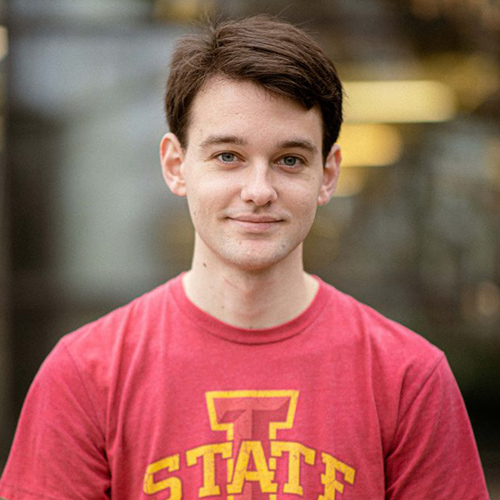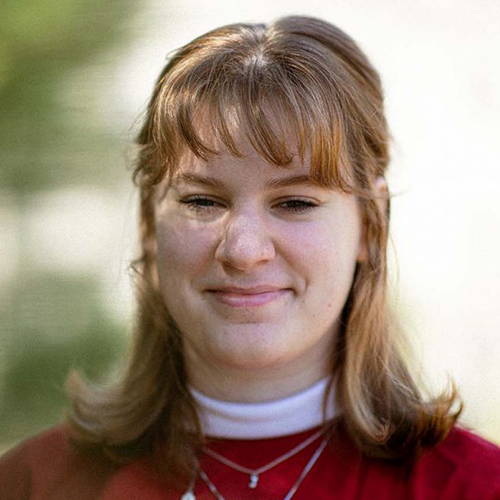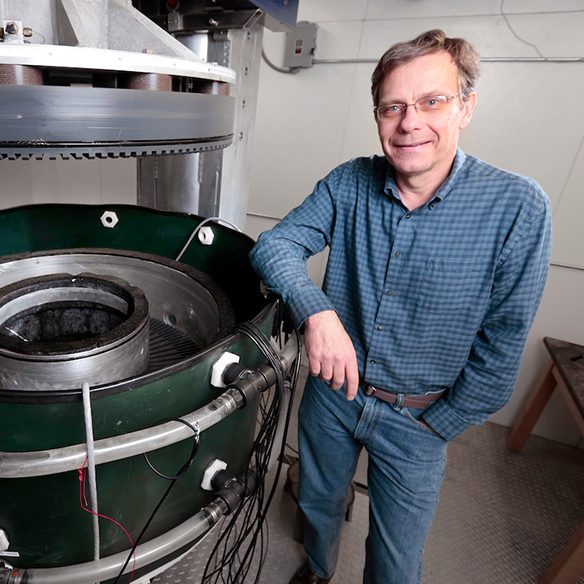
Be a part of a more sustainable future.
The climate crisis is not an impending danger to our environment anymore. It’s here. Across the world, we’ve already begun to feel its effects, and now more than ever we need climate professionals on every front — making breakthrough discoveries in the field and applying their findings across a multitude of industries.
Climate science majors at Iowa State are answering that call, helping create sustainable solutions today while preparing for fulfilling careers that are on the cutting-edge of adapting to our changing climate. Here, you’ll find a passionate, lifelong community dedicated to solving one of humankind’s greatest problems.
Real climate solutions come from every angle.
Cyclones recognize that our climate never had one solution because it was never one problem. That’s why you’ll learn the fundamentals of climate science while specializing in one of six pathways where your passions and goals align with real-world needs:
- Advanced climate science
- Data visualization
- Design and planning for sustainability
- Climate, food, agriculture, and biodiversity
- Policy and human behavior
- Science communication
Pathway Courses
-
15-20 hours
to master your angle
Tomorrow’s curriculum, delivered today.
Your pathway will prepare you for burgeoning careers in fields like technology, business, national security, and research. From sustainability analysts to climate risk specialists, from climate scientists to careers that don’t even exist yet, our graduates engage in exciting and gratifying work that can evolve with and sustain their efforts for a lifetime.
Complete an innovative core curriculum grounded in the active and evolving research of expert faculty mentors. Master the skills you need to apply climate science to careers in any field you choose.
Current students and faculty making a difference.
-

Unexpected Angles
Pursuing a career in consultation, Owen Halverson ‘24 is majoring in climate science to provide help in a way he thinks people probably don’t consider — communication. “I want to help convey what people need to know to improve our cities and ensure businesses stay on green pathways for the future,” he said.
-

A Modern Major for the Next Generation
Jack Harris ‘24 believes the climate science program speaks to the changing global needs and engages the diverse interests of students. He plans to work in environmental planning, helping to plan and construct the sustainable infrastructure of tomorrow.
-

Hope For Our World
“The climate science program makes me feel like there’s still hope for helping our planet, that we can all make an impact and teach others to do the same,” said Amanda Hauser ‘25, who hopes a career in glacial research, hydrology, or environmental sustainability can help others understand how to ameliorate our changing climate.
-

A Decades-Long Puzzle
Dr. Neal Iverson has spent nearly 40 years studying how glaciers move — from frigid Arctic peaks to the frozen underbelly of a 700-foot-thick glacier in Norway. “Science moves in unpredictable directions, and the breakthroughs often happen years into a project,” he said. “Our research has to be anchored in curiosity and exploration.”
-

Our Climate, 2,500 Years in the Making
When most people look at a cave, they don’t see a time machine – then again, most people aren’t Dr. Alan Wanamaker. In 2019, Dr. Wanamaker led a team through five caves in Portugal to collect data to reconstruct the atmospheric dynamics and hydroclimate dating back to the fall of the Zhou dynasty and the Greco-Persian Wars.
-

Cyclones on Cyclones
Dr. Christina Patricola and her collaborators are projecting a possible increase of tropical cyclones for the Atlantic coast, up to 66 percent. These storm systems will also likely be much stronger, suggested by active simulations using a high-resolution, global climate model. “Anything that can be done to curb greenhouse gas emissions could be helpful to reduce this risk,” said Dr. Patricola.
